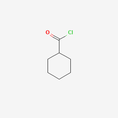Introduction
A crosslinking agent for polymers is a chemical compound that plays a pivotal role in the polymer industry. It is designed to create covalent bonds between polymer chains, transforming linear or branched polymer molecules into a three - dimensional network structure. This process, known as crosslinking, significantly alters the physical and chemical properties of polymers. Our crosslinking agent is a high - quality product formulated with advanced chemical technology, ensuring excellent performance and reliability in various polymer - related applications.
Advantages
Enhanced Mechanical Properties
By forming crosslinks between polymer chains, our crosslinking agent greatly improves the mechanical strength, toughness, and abrasion resistance of polymers. This results in products that can withstand higher stress and have a longer service life, making them suitable for demanding applications.
Improved Chemical Resistance
The crosslinked polymer network provides better resistance to chemicals, solvents, and environmental factors. This means that polymers treated with our crosslinking agent are less likely to be damaged by exposure to harsh chemicals, extending their usability in corrosive environments.
Heat Resistance
Crosslinking enhances the heat - resistance of polymers. The three - dimensional network structure restricts the movement of polymer chains at high temperatures, preventing melting or deformation. As a result, polymers crosslinked with our agent can maintain their shape and properties even under elevated temperature conditions.
Customizable Crosslinking Degree
Our crosslinking agent allows for precise control of the crosslinking degree. Depending on the specific requirements of the application, the amount of crosslinking agent can be adjusted to achieve the desired level of crosslinking, enabling the production of polymers with tailored properties.
Applications
Rubber Industry
In the rubber industry, our crosslinking agent is used to vulcanize rubber. Vulcanization creates crosslinks between rubber molecules, improving the elasticity, strength, and heat resistance of rubber products. It is widely applied in the manufacturing of tires, seals, gaskets, and other rubber components.
Plastics Industry
For plastics, crosslinking can enhance the performance of various plastic materials. For example, in the production of thermosetting plastics, our crosslinking agent helps to form a rigid and durable network structure, making the plastics suitable for applications such as electrical insulation, automotive parts, and consumer goods.
Coating and Adhesive Industry
In coatings and adhesives, crosslinking agents are used to improve the adhesion, hardness, and chemical resistance of the products. Our crosslinking agent can be incorporated into coating formulations to create a tough and protective film on the surface of substrates, and in adhesives to provide strong bonding between different materials.
FAQ
Q1: How do I determine the appropriate amount of crosslinking agent to use?
A1: The appropriate amount of crosslinking agent depends on several factors, including the type of polymer, the desired crosslinking degree, and the specific application requirements. We recommend conducting small - scale tests with different dosages to determine the optimal amount for your particular polymer system. Our technical support team can also provide guidance based on your specific needs.
Q2: Is the crosslinking process time - consuming?
A2: The crosslinking time can vary depending on the type of crosslinking agent, the polymer system, and the reaction conditions (such as temperature and pressure). In general, our crosslinking agent is designed to have a reasonable reaction rate. Under normal processing conditions, the crosslinking process can be completed within a relatively short period, but it may be adjusted according to the specific production requirements.
Q3: Can the crosslinking agent be used with all types of polymers?
A3: Our crosslinking agent is compatible with a wide range of polymers, including many common rubbers and plastics. However, different polymers have different chemical structures and reactivity, so it is necessary to test the compatibility before large - scale use. We can provide compatibility information and technical advice for specific polymer types.
Q4: What are the storage conditions for the crosslinking agent?
A4: The crosslinking agent should be stored in a cool, dry place away from direct sunlight and sources of heat. It should be kept in a tightly sealed container to prevent moisture and air from entering, as these factors may affect the stability and performance of the agent.
Q5: Is the crosslinking agent safe to handle?
A5: Our crosslinking agent is formulated with safety in mind. However, like any chemical product, it should be handled with care. Operators should wear appropriate personal protective equipment, such as gloves and goggles, during handling. Follow the safety instructions provided in the product manual to ensure safe use.
Hot Tags: crosslinking agent for polymers, China crosslinking agent for polymers manufacturers, suppliers, factory, pharmaceutical intermediate pricing, pharmaceutical intermediate publicists, specialty pharmaceutical intermediates, pharmaceutical intermediate distributors, pharmaceutical intermediate process, chemicals for pharmaceutical intermediates










